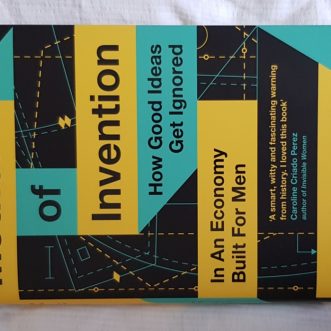September 7, 2021
“Design your business or it will be designed for you.” It’s one of my favourite sayings, spoken by Brian Chesky of AirBnB.
But what does it actually mean? How can others design your business for you, when you’re the boss?
When you started out as a one-person band, you did everything. You tried different things to market and sell your services, and to deliver them in such a way that customers came back, or told their friends. You designed the business.
Once demand grows beyond what you can personally deliver, you have to add capacity. And every time you do that, you bring in someone else’s idea and experience of what a business looks like.
You might add capacity by automating some of what you do with software. That job management software, quote generator or CRM tool was designed by someone else, according to their vision of what a business is and how a business works. A vision that is necessarily generic, otherwise they couldn’t sell enough to be viable.
You might outsource some of what you do, your accounts, or your HR for example. Your accountant or sales agent will have their own idea of what a business is and how it works. If they’re any good they’ll try to find out more about yours, but often they’ll fall back on a generic design to fit all industries, or a design learned working elsewhere, or their own design. It’s not your area of expertise, so even though you don’t love it, you put up with it.
You might work with other small businesses like yourself, sub-contracting some of the delivery. But like yourself, they will have designed their own small business, and that design probably won’t match yours. That can prove exasperating and stressful, unless you decide it doesn’t matter that much, and accept the differences.
You might recruit a business partner, co-director, manager or experienced staff to take on some of the work you do. Almost certainly you’ll want them to have experience of business in general and your industry in particular. In other words, they’ll bring with them the design of those other businesses they’ve worked in, plus their own ideas of how to do things. If you’re very lucky, those ideas will chime with yours. If you’re not, you’ll be fighting to maintain your business design, or running through several cycles before you find ‘the right person’.
You might recruit juniors, school-leavers or graduates even, who you can ‘mould’ to suit your business design. But moulding takes time, and even they will have their own ideas of how things should be done. They need almost constant supervision and just don’t seem to get it.
You might hire a business coach or consultant to help you deal with all these problems. They too, come with baggage of what a business ‘should’ look like, learned at the Bank, or at business school, or from building their own successful businesses. They will try and shape your business to fit.
In the face of all this, you have a choice. You can supervise closely, re-do work, fight to correct what everyone else is doing ‘wrong’, or you can accept other people’s designs for your business. The first is exhausting, the second feels like it’s not your business any more.
There’s a step you can take, which can solve all of these potential problems before they happen, which is to take your business design out of your head and get it down as a shareable ‘blueprint’ everyone can work from. The Customer Experience Score for your business. That captures your unique way of making and keeping promises to the people you serve.
Your Score becomes a specification for software, an operations manual for new staff, suppliers and contractors at all levels. Above all it becomes a permanent record of your design for your business, that enables your unique creation to scale, evolve and persist through time.
Design your business, or sooner or later, you’ll be back to working in someone else’s business.









